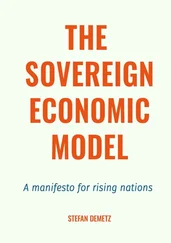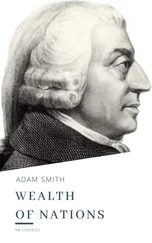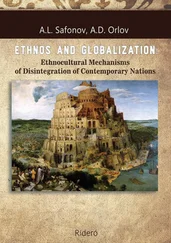BREAKING THE BARRIERS: THE FRENCH REVOLUTION
For the three centuries prior to 1789, France was ruled by an absolutist monarchy. French society was divided into three segments, the so-called estates. The aristocrats (the nobility) made up the First Estate, the clergy the Second Estate, and everybody else the Third Estate. Different estates were subject to different laws, and the first two estates had rights that the rest of the population did not. The nobility and the clergy did not pay taxes, while the citizens had to pay several different taxes, as we would expect from a regime that was largely extractive. In fact, not only was the Church exempt from taxes, but it also owned large swaths of land and could impose its own taxes on peasants. The monarch, the nobility, and the clergy enjoyed a luxurious lifestyle, while much of the Third Estate lived in dire poverty. Different laws not only guaranteed a greatly advantageous economic position to the nobility and the clergy, but it also gave them political power.
Life in French cities of the eighteenth century was harsh and unhealthy. Manufacturing was regulated by powerful guilds, which generated good incomes for their members but prevented others from entering these occupations or starting new businesses. The so-called ancien régime prided itself on its continuity and stability. Entry by entrepreneurs and talented individuals into new occupations would create instability and was not tolerated. If life in the cities was harsh, life in the villages was probably worse. As we have seen, by this time the most extreme form of serfdom, which tied people to the land and forced them to work for and pay dues to the feudal lords, was long in decline in France. Nevertheless, there were restrictions on mobility and a plethora of feudal dues that the French peasants were required to pay to the monarch, the nobility, and the Church.
Against this background, the French Revolution was a radical affair. On August 4, 1789, the National Constituent Assembly entirely changed French laws by proposing a new constitution. The first article stated:
The National Assembly hereby completely abolishes the feudal system. It decrees that, among the existing rights and dues, both feudal and censuel, all those originating in or representing real or personal serfdom shall be abolished without indemnification.
Its ninth article then continued:
Pecuniary privileges, personal or real, in the payment of taxes are abolished forever. Taxes shall be collected from all the citizens, and from all property, in the same manner and in the same form. Plans shall be considered by which the taxes shall be paid proportionally by all, even for the last six months of the current year.
Thus, in one swoop, the French Revolution abolished the feudal system and all the obligations and dues that it entailed, and it entirely removed the tax exemptions of the nobility and the clergy. But perhaps what was most radical, even unthinkable at the time, was the eleventh article, which stated:
All citizens, without distinction of birth, are eligible to any office or dignity, whether ecclesiastical, civil, or military; and no profession shall imply any derogation.
So there was now equality before the law for all, not only in daily life and business, but also in politics. The reforms of the revolution continued after August 4. It subsequently abolished the Church’s authority to levy special taxes and turned the clergy into employees of the state. Together with the removal of the rigid political and social roles, critical barriers against economic activities were stamped out. The guilds and all occupational restrictions were abolished, creating a more level playing field in the cities.
These reforms were a first step toward ending the reign of the absolutist French monarchs. Several decades of instability and war followed the declarations of August 4. But an irreversible step was taken away from absolutism and extractive institutions and toward inclusive political and economic institutions. These changes would be followed by other reforms in the economy and in politics, ultimately culminating in the Third Republic in 1870, which would bring to France the type of parliamentary system that the Glorious Revolution put in motion in England. The French Revolution created much violence, suffering, instability, and war. Nevertheless, thanks to it, the French did not get trapped with extractive institutions blocking economic growth and prosperity, as did absolutist regimes of Eastern Europe such as Austria-Hungary and Russia.
How did the absolutist French monarchy come to the brink of the 1789 revolution? After all, we have seen that many absolutist regimes were able to survive for long periods of time, even in the midst of economic stagnation and social upheaval. As with most instances of revolutions and radical changes, it was a confluence of factors that opened the way to the French Revolution, and these were intimately related to the fact that Britain was industrializing rapidly. And of course the path was, as usual, contingent, as many attempts to stabilize the regime by the monarchy failed and the revolution turned out to be more successful in changing institutions in France and elsewhere in Europe than many could have imagined in 1789.
Many laws and privileges in France were remnants of medieval times. They not only favored the First and Second Estates relative to the majority of the population but also gave them privileges vis-à-vis the Crown. Louis XIV, the Sun King, ruled France for fifty-four years, between 1661 to his death in 1715, though he actually came to the throne in 1643, at the age of five. He consolidated the power of the monarchy, furthering the process toward greater absolutism that had started centuries earlier. Many monarchs often consulted the so-called Assembly of Notables, consisting of key aristocrats handpicked by the Crown. Though largely consultative, the Assembly still acted as a mild constraint on the monarch’s power. For this reason, Louis XIV ruled without convening the Assembly. Under his reign, France achieved some economic growth—for example, via participation in Atlantic and colonial trade. Louis’s able minister of finance, Jean-Baptiste Colbert, also oversaw the development of government-sponsored and government-controlled industry, a type of extractive growth. This limited amount of growth benefited almost exclusively the First and Second Estates. Louis XIV also wanted to rationalize the French tax system, because the state often had problems financing its frequent wars, its large standing army, and the King’s own luxurious retinue, consumption, and palaces. Its inability to tax even the minor nobility put severe limits on its revenues.
Though there had been little economic growth, by the time Louis XVI came to power in 1774, there had nevertheless been large changes in society. Moreover, the earlier fiscal problems had turned into a fiscal crisis, and the Seven Years’ War with the British between 1756 and 1763, in which France lost Canada, had been particularly costly. A number of significant figures attempted to balance the royal budget by restructuring the debt and increasing taxes; among them were Anne-Robert-Jacques Turgot, one of the most famous economists of the time; Jacques Necker, who would also play an important role after the revolution; and Charles Alexandre de Calonne. But none succeeded. Calonne, as part of his strategy, persuaded Louis XVI to summon the Assembly of Notables. The king and his advisers expected the Assembly to endorse his reforms much in the same way as Charles I expected the English Parliament to simply agree to pay for an army to fight the Scottish when he called it in 1640. The Assembly took an unexpected step and decreed that only a representative body, the Estates-General, could endorse such reforms.
Читать дальше












